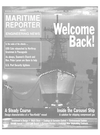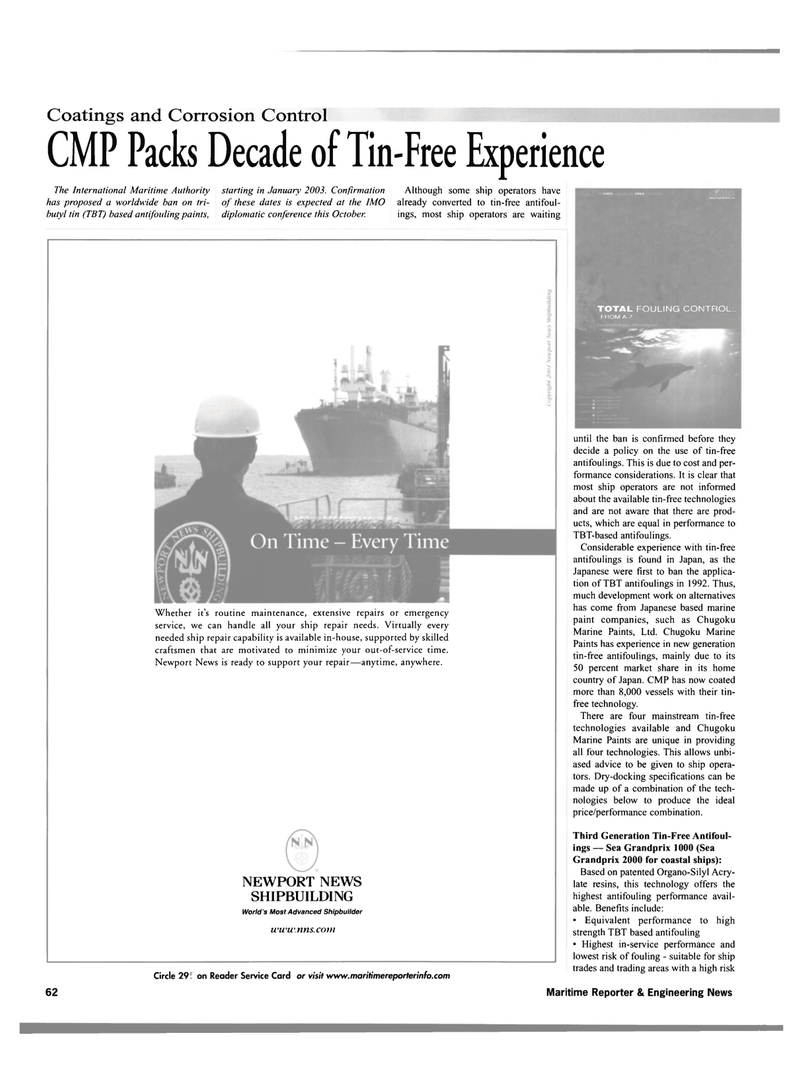
Page 3rd Cover: of Maritime Reporter Magazine (October 2001)
Read this page in Pdf, Flash or Html5 edition of October 2001 Maritime Reporter Magazine
Coatings and Corrosion Control
CMP Packs Decade of Tin-Free Experience
The International Maritime Authority starting in January 2003. Confirmation Although some ship operators have has proposed a worldwide ban on tri- of these dates is expected at the IMO already converted to tin-free antifoul- butyl tin (TBT) based antifouling paints, diplomatic conference this October. ings, most ship operators are waiting
Whether it's routine maintenance, extensive repairs or emergency service, we can handle all your ship repair needs. Virtually every needed ship repair capability is available in-house, supported by skilled craftsmen that are motivated to minimize your out-of-service time.
Newport News is ready to support your repair—anytime, anywhere.
NEWPORT NEWS
SHIPBUILDING
World's Most Advanced Shipbuilder www.nns.com
TOTAL FOULING CONTROL...
FROM A-Z
Circle 269 on Reader Service Card or visit www.maritimereporterinfo.com 62 until the ban is confirmed before they decide a policy on the use of tin-free antifoulings. This is due to cost and per- formance considerations. It is clear that most ship operators are not informed about the available tin-free technologies and are not aware that there are prod- ucts, which are equal in performance to
TBT-based antifoulings.
Considerable experience with tin-free antifoulings is found in Japan, as the
Japanese were first to ban the applica- tion of TBT antifoulings in 1992. Thus, much development work on alternatives has come from Japanese based marine paint companies, such as Chugoku
Marine Paints, Ltd. Chugoku Marine
Paints has experience in new generation tin-free antifoulings, mainly due to its 50 percent market share in its home country of Japan. CMP has now coated more than 8,000 vessels with their tin- free technology.
There are four mainstream tin-free technologies available and Chugoku
Marine Paints are unique in providing all four technologies. This allows unbi- ased advice to be given to ship opera- tors. Dry-docking specifications can be made up of a combination of the tech- nologies below to produce the ideal price/performance combination.
Third Generation Tin-Free Antifoul- ings — Sea Grandprix 1000 (Sea
Grandprix 2000 for coastal ships):
Based on patented Organo-Silyl Acry- late resins, this technology offers the highest antifouling performance avail- able. Benefits include: • Equivalent performance to high strength TBT based antifouling • Highest in-service performance and lowest risk of fouling - suitable for ship trades and trading areas with a high risk
Maritime Reporter & Engineering News

 70
70

 4th Cover
4th Cover
